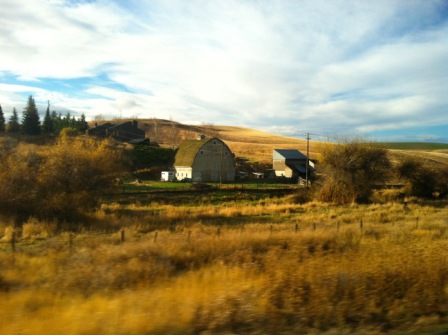In October, 2012, The Cultural Trust Gave the Oregon Heritage Commission and Historic Preservation League of Oregon $20,000 to provide scholarships to the National Trust for Historic Preservation’s 2012 Conference in Spokane, WA. Twenty-one students and preservationists attended using these scholarships. Here is one attendee’s report:

As October drew to a close, I had the pleasure of spending a week in Spokane, Washington, immersed in the National Trust for Historic Preservation’s 2012 Conference.
Through the exceedingly generous sponsorship of the Oregon Cultural Trust and the Historic Preservation League of Oregon, I arrived into a rich urban fabric, cultural landscapes, and a diverse group of conferees. In addition to tours, lectures, and mixers for the professional groups, I couldn’t help but budget a number of hours to explore the city on foot.
What really struck me was the spectrum of Spokane’s public history narratives—early settlements, hydroelectric power, public recreation, commercial growth, engineering, and others—that remain visibly intertwined throughout the city. Of course, as a graduate student in historic preservation, I may have a tendency to make a bee-line for the historical life of communities. However, in a time when the public past is hardly treated as indispensable, I couldn’t help but notice how Spokane has attended to celebrating its vibrant sense of place. From the embankment of the Monroe Street Bridge to the reaches of the Centennial Trail, engaging interpretive signs and clear indications of ongoing maintenance speak to a sense of care and pride which many historic communities have yet to develop. Even everyday passersby seemed aware of this. “It’s hard not to want to share this city,” said a local when I asked her how it felt to walk through the Riverfront District each day.
While I found the city to be steeped in historic resources, the chance to get out to nearby Palouse was one I had been anticipating. Heralded by the Washington Trust as the region’s inland agricultural empire, it was hard to miss the rationale for such a distinction. Miles of hills stretching from Coeur d’Alene to Walla Walla, were still thickly carpeted in ripening wheat—a lasting tie between the region’s earliest settlement and the folks who still weave their living and their story into each successive harvest. A series of byways and county roads revealed, one by one, many of the buildings which still communicate this rich and complex legacy, all part of Washington’s Heritage Barn Register—an exemplary and admirably run public program. From the to the rehabilitation of 1919 Heidenreich dairy in Colfax to the 1915 Eriksen hay operations, an illustrative sample of the region’s cultural, economic, and technological development still stand witness to the Northwest’s heritage.
Back in Spokane, more events and interaction led me to reconsider my perceptions of the preservation field. No doubt my horizons will continue to broaden as a result, along with those of the many academic and professional colleagues I was so fortunate to meet.Thank you to the Oregon Cultural Trust for this wonderful opportunity!
Noah Kerr, University of Oregon Historic Preservation Program student and Graduate Teaching Fellow